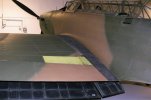The Revell 1:32 Spitfire Mk2a, available new for less than £30.00 Well worth it. I built it OOB over the last few months. I actually suspended building this for the Bi-plane build, so can't really say how long it took me, but some of you professional builders could knock this out in a couple of weeks, it was that easy.
Some of you know, I do like a bit of weathering on my models and have been guilty of over doing it on a few occasions. This is one of those models, you could actually go well over the top, and still be safely in the realms of reality. There are many pictures flying around of very tired Battle of Britain Spitfires on the web.
For example, not much paint left on that wing root.
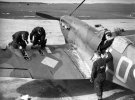
Anyway, I think I've been quite restrained with weathering on this build. See what you think.
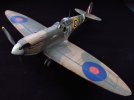
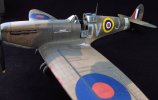
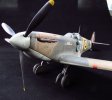
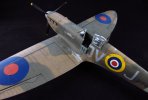
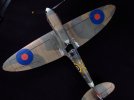
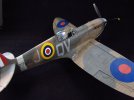
Paints were by MRP. I also used a bit of hairspray for the wear on the wing roots.
Paint is all MRP, and the famous hairspray trick for the wing roots. If you want a decent priced 1:32 Spitfire, with good detail, I do recomend this offering from Revell.
Some of you know, I do like a bit of weathering on my models and have been guilty of over doing it on a few occasions. This is one of those models, you could actually go well over the top, and still be safely in the realms of reality. There are many pictures flying around of very tired Battle of Britain Spitfires on the web.
For example, not much paint left on that wing root.

Anyway, I think I've been quite restrained with weathering on this build. See what you think.






Paints were by MRP. I also used a bit of hairspray for the wear on the wing roots.
Paint is all MRP, and the famous hairspray trick for the wing roots. If you want a decent priced 1:32 Spitfire, with good detail, I do recomend this offering from Revell.

 , ive built this and it is a good value for money kit
, ive built this and it is a good value for money kit If this were an armoured vehicle my first thought would have been a gas-detector patch, but that’s a little unlikely on an aircraft …
If this were an armoured vehicle my first thought would have been a gas-detector patch, but that’s a little unlikely on an aircraft …